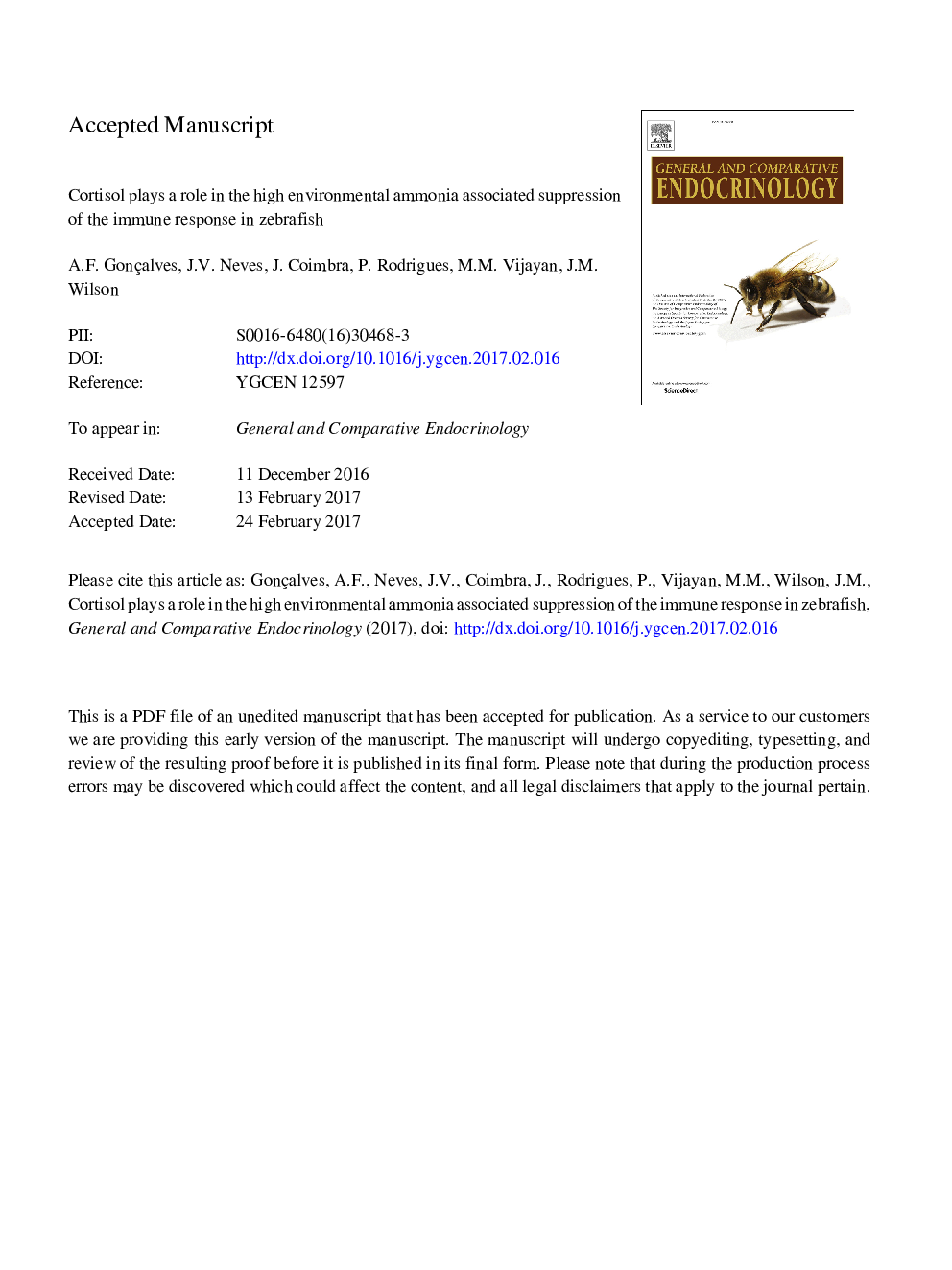| Article ID | Journal | Published Year | Pages | File Type |
|---|---|---|---|---|
| 5587721 | General and Comparative Endocrinology | 2017 | 36 Pages |
Abstract
Exposure to high environmental ammonia (HEA) levels increases the vulnerability of fishes to parasitic, viral and bacterial diseases. We tested the hypothesis that elevated plasma cortisol levels play a role in the HEA-mediated immunosuppression in fishes. To this end, we tested the effect of exogenous cortisol treatment on the lipopolysaccharide (LPS)-induced immune response in zebrafish (Danio rerio). Also, to test whether glucocorticoid receptor (GR) signaling is involved in HEA-mediated immunosuppression, zebrafish were treated with mifepristone, a GR antagonist, and the LPS-induced immune response assessed after HEA exposure. We evaluated a panel of important immunity-related genes including interleukin 1β (il1b) and suppressor of cytokine signaling (socs-1a, 2, 3) and acute phase response genes [serum amyloid A (saa), transferrin (tfa), leukocyte cell-derived chemotaxin 2-like (lect2l), haptoglobin (hp), hepcidin (=hepatic anti-microbial peptide hamp), and complement component 3b (c3b)] by real-time quantitative PCR. Our results demonstrate that exogenous cortisol administration as well as elevated cortisol levels in response to HEA exposure modulate mRNA transcript levels of key mediators of the innate immune response in zebrafish. Mifepristone treatment reduced whole body cortisol levels and eliminated the HEA-mediated changes in transcript abundance of socs1a, il1b, as well as APR genes. Together, these results suggest that the HEA effect on the innate immune response is in part mediated by cortisol signaling, while the mode of action, including the receptors involved remains to be elucidated.
Related Topics
Life Sciences
Biochemistry, Genetics and Molecular Biology
Endocrinology
Authors
A.F. Gonçalves, J.V. Neves, J. Coimbra, P. Rodrigues, M.M. Vijayan, J.M. Wilson,
